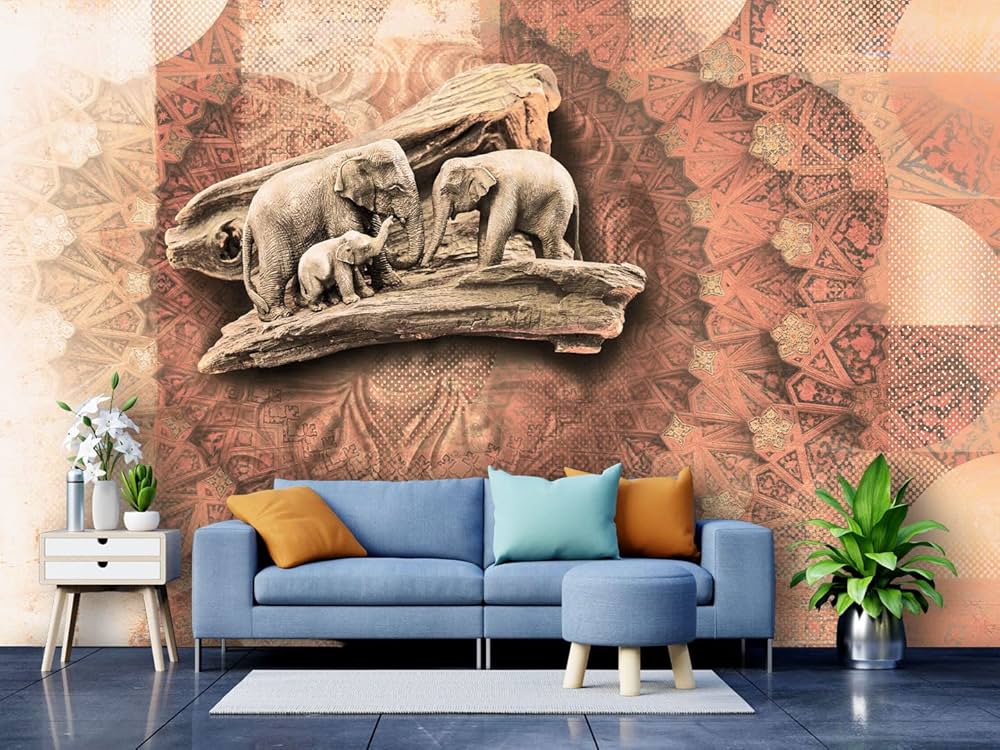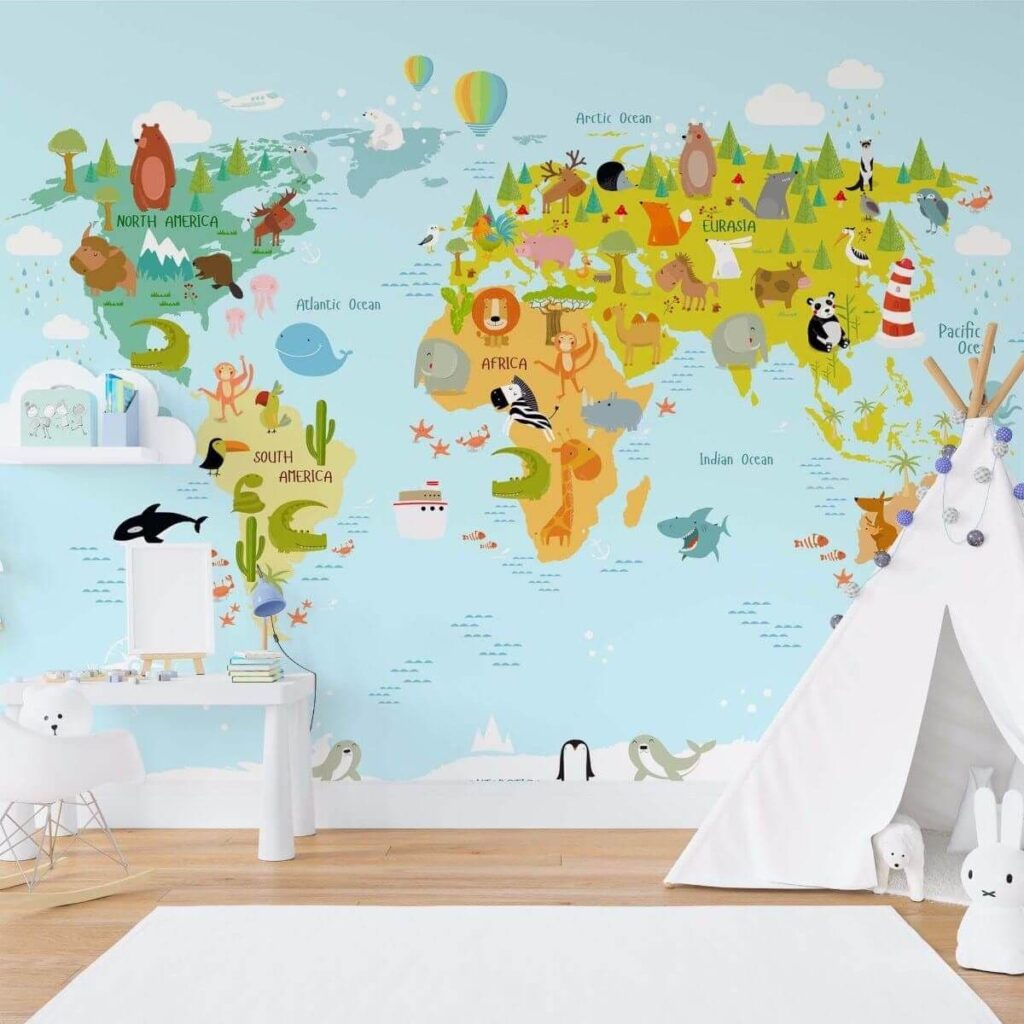When you think of wallpaper, you might picture an old-fashioned, dusty roll of floral patterns, but today’s wallpaper is so much more. It’s evolved from a simple decorative element into a dynamic part of modern interior design. Wallpaper now serves a multitude of functions, from enhancing aesthetics to offering practical benefits. Let’s dive into how wallpaper has transformed over the years and explore why it’s become a design staple.
The Evolution of Wallpaper
Wallpaper’s journey began in ancient China, where early forms of paper were used to cover walls. As it spread to Europe, particularly during the Renaissance, wallpaper gained popularity among the wealthy. Back then, it was often hand-painted and considered a luxury item. By the 18th century, the invention of printing techniques made wallpaper more accessible, allowing it to become a common feature in homes across the continent.
Modern Innovations
Today, wallpaper has undergone remarkable changes thanks to technological advancements. Here are some of the exciting innovations that have redefined wallpaper:

- Textured Wallpapers: Gone are the days of flat, two-dimensional wallpaper. Modern textured wallpapers can mimic the look of materials like wood, stone, or fabric, adding a rich, tactile dimension to your walls.
- Removable and Peelable Wallpapers: Perfect for renters or those who like to frequently update their décor, these wallpapers are easy to apply and remove, leaving no sticky residue behind.
- Eco-Friendly Options: With growing environmental consciousness, eco-friendly wallpapers are now available. These use sustainable materials and non-toxic inks, making them a great choice for the environmentally-minded.
- Digital Prints and Custom Designs: The rise of digital printing has opened up a world of possibilities. You can now create custom wallpapers featuring personal photos, unique artworks, or bespoke patterns, allowing for a truly personalized touch.
- Smart Wallpapers: Though still emerging, smart wallpapers incorporate technology like LED lights or interactive elements, offering an exciting glimpse into the future of home décor.
Why Wallpaper is a Game Changer

Wallpaper offers more than just a pretty face. Here are some of the practical benefits that make it a valuable addition to any home:
- Durability: High-quality wallpaper can last for decades if properly cared for. It’s often more resistant to wear and tear compared to paint, which is especially useful in high-traffic areas.
- Insulation: Some wallpapers provide additional insulation, helping to keep rooms warmer in winter and cooler in summer. This can contribute to better energy efficiency in your home.
- Soundproofing: Acoustic wallpapers are designed to absorb sound, making them ideal for reducing noise in busy households or office spaces.
- Easy Maintenance: Many modern wallpapers are washable and resistant to stains, which makes them practical for areas prone to spills and everyday messes.
- Design Versatility: With endless patterns, colors, and textures, wallpaper offers unparalleled flexibility in design. From classic florals to bold geometrics, there’s something to suit every taste and style.
Choosing the Perfect Wallpaper
Selecting the right wallpaper involves more than just picking a design you like. Here are some tips to help you make the best choice:
- Consider Room Function: Think about the function of the room. Durable, washable wallpapers are great for high-traffic areas like hallways and kitchens, while more delicate designs might be suited for bedrooms or formal living spaces.
- Think About Color and Pattern: Light colors and small patterns can make a room feel larger, while dark colors and large patterns create a cozy, intimate atmosphere. Choose according to the mood you want to set.
- Lighting Matters: Wallpaper can look different depending on the lighting in the room. Test samples under various light conditions to see how they change throughout the day.
- Scale Your Choices: The size of the pattern should be in proportion to the size of the room. Large patterns can dominate small spaces, while small patterns might get lost in larger rooms.
- Installation Considerations: Decide whether you’ll be installing the wallpaper yourself or hiring a professional. Some wallpapers require special adhesives or techniques, so make sure you’re prepared.

DIY Wallpaper Installation Tips
If you’re taking on the wallpapering project yourself, here are some practical tips to help ensure a successful outcome:
- Prepare Your Walls: Clean, dry, and smooth walls are essential for a good wallpaper application. Fill any holes or cracks and sand the surface if needed.
- Measure and Cut Carefully: Measure your walls accurately and cut the wallpaper strips to size. It’s always a good idea to leave a little extra material to trim the edges.
- Apply Adhesive Properly: Follow the manufacturer’s instructions for applying adhesive. Some wallpapers need paste on the wall, while others require it on the back of the wallpaper.
- Align Patterns: If your wallpaper has a pattern, make sure to align it properly as you hang it. This can be tricky, but taking your time will pay off with a seamless look.
- Smooth Out Bubbles: Use a smoothing tool to remove air bubbles and ensure the wallpaper adheres flatly to the wall. Pay attention to the seams to avoid visible lines.
Final Thoughts
Wallpaper has truly come into its own as a versatile and practical design element. With its rich history, modern innovations, and numerous benefits, it’s clear that wallpaper is much more than just paper. Whether you’re looking to refresh a single room or redesign your entire home, wallpaper offers endless possibilities for creating beautiful, personalized spaces. So, next time you’re considering a home makeover, remember that wallpaper could be the perfect solution to bring your vision to life.

